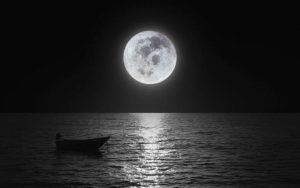Glowing in the Night: 2023 Full Moon Calendar for Stargazers
Welcome to the cosmos, dear stargazers and lunar admirers! I’m [Author’s Name], a passionate astronomer and ardent night sky enthusiast, always in awe of the celestial wonders that grace our nights. Drawing upon my fascination for the moon and the vastness of space, I am thrilled to present this captivating article in collaboration with NASA, an authority on all things space. Our journey will illuminate the lunar spectacle of 2023 through the lens of the “2023 Full Moon Calendar,” meticulously curated for the stargazers like you. Let’s embark on this celestial journey, embracing the moonlit nights and diving into the enchanting world of lunar cycles.

Lunar Splendor: Full Moons in 2023
To truly appreciate the beauty and allure of the moon, it’s essential to understand its various phases. The year 2023 is adorned with twelve full moons, each with its own unique charm. Here’s a comprehensive list of full moons in 2023, painting the nights with their luminous glow:
- January 2-3: Wolf Moon
- February 1: Snow Moon
- March 3: Worm Moon
- April 2: Pink Moon
- May 1: Flower Moon
- May 31: Strawberry Moon
- June 30: Buck Moon
- July 29: Sturgeon Moon
- August 28: Corn Moon
- September 27: Harvest Moon
- October 27: Hunter’s Moon
- November 25: Beaver Moon
- December 25: Cold Moon
These full moons, each bearing a unique name from Native American, Colonial American, and other traditional North American sources, offer a delightful spectacle throughout the year. Whether it’s the ethereal glow of the Strawberry Moon in June or the enchanting Cold Moon on a wintry December night, each full moon brings its own magic and allure.
NASA’s Celestial Insights: Lunar Phenomena
Let’s delve into the science and wonder behind these celestial events. NASA, with its wealth of knowledge and expertise, offers profound insights into the significance of full moons. The moon’s phases are a result of its orbital relationship with the Earth and the Sun. During a full moon, the moon is opposite the Sun, with its entire illuminated side facing us on Earth, presenting a stunning radiant appearance.
NASA’s lunar experts shed light on how the moon’s brightness during a full moon can sometimes interfere with astronomical observations. Despite this, the full moon is a favorite among stargazers for its brilliance, providing ample light to enjoy the night sky and explore without additional lighting.
Mesmerizing Moon Phases: A Visual Odyssey
Understanding the moon’s phases adds another layer of appreciation to its beauty. The moon undergoes several phases as it orbits the Earth, resulting in its varying appearances from our perspective. Here’s a quick visual guide to the main phases of the moon:
- New Moon: Invisible, 0% illumination.
- First Quarter: Right half illuminated, 50% illumination.
- Full Moon: Fully illuminated, 100% illumination.
- Last Quarter: Left half illuminated, 50% illumination.
The dance between these phases is a captivating cosmic display, showcasing the moon’s changing face as it journeys through its monthly cycle.
Full Moon Photography: Tips and Techniques
Capturing the moon’s beauty through photography is an art worth exploring. Whether you’re a seasoned astrophotographer or a newbie with a smartphone, here are some tips to help you capture the moon’s ethereal glow:
- Use a Telephoto Lens: Zoom lenses or dedicated telescope attachments can bring the moon closer and reveal intricate details.
- Optimal Settings: Adjust ISO, shutter speed, and aperture to ensure proper exposure and sharpness in your shots.
- Stable Support: Use a tripod or a stable surface to avoid blurring caused by camera shake.
- Plan Around Phases: Experiment with photography during different phases to capture diverse lunar landscapes and shadows.
Rituals and Cultural Significance: Moon Across Cultures
The moon has played a significant role in various cultures and traditions throughout history. It has been a source of inspiration, a symbol of divinity, and a calendar for agricultural practices. Different cultures have assigned names and stories to the full moons, creating a rich tapestry of lunar folklore. For instance:
- The “Wolf Moon” in January symbolizes hungry wolf packs howling in the winter night, according to Native American tradition.
- The “Harvest Moon” in September was historically vital for farmers to gather crops under the bright moonlight.
Planning Your Stargazing Nights: Using the Full Moon Calendar
The 2023 Full Moon Calendar is your guide to orchestrating the perfect stargazing nights. Whether you’re planning an observation session or astrophotography, aligning your activities with the moon’s phases can enhance your experience. Keep this calendar handy to make the most of every moonlit night.
In conclusion, the moon, with its mesmerizing phases and ethereal glow, continues to captivate stargazers and dreamers alike. With the aid of NASA’s insights and the 2023 Full Moon Calendar, let’s journey into the cosmos, immersing ourselves in the celestial ballet of the moon. May this year be filled with moonlit magic and awe-inspiring stargazing adventures.
Let’s keep our eyes on the night sky and revel in the glory of the moon’s radiant presence throughout 2023! Happy stargazing!










